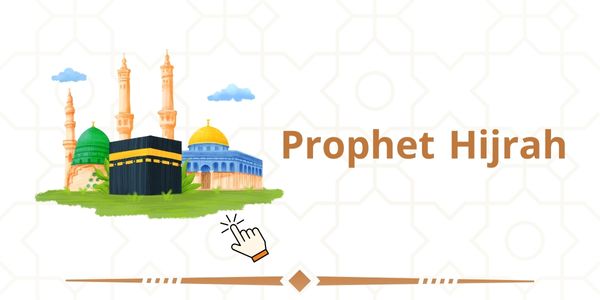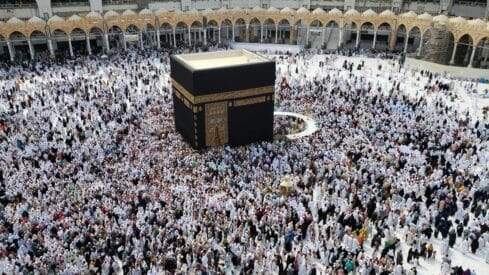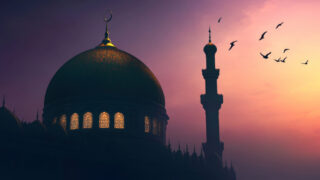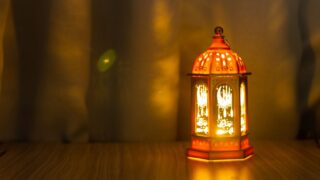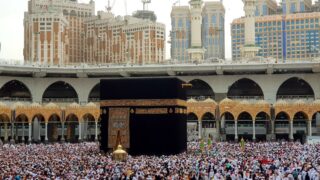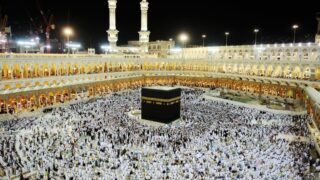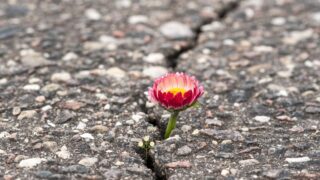There are journeys mentioned in the Qur’an by the wisdom of Allah, and others that the Qur’an did not mention, but the revelation, told by the truthful was revealed to inform the nation.
The Holy Qur’an mentioned the journey of our father Ibrahim, peace be upon him, to the Holy Land when he left his wife and his boy in the barren valley, and he said in prayer: {Our Lord, I have settled some of my descendants in an uncultivated valley near Your sacred House} Ibrahim: 37
Then the Holy Qur’an mentioned the journey in which the foundations of the House were raised, saying: {And [mention] when Abraham was raising the foundations of the House and [with him] Ishmael, [saying], “Our Lord, accept [this] from us. Indeed, You are the Hearing, the Knowing.} Al-Baqara: 127
And because these trips were pivotal in the life of our father Ibrahim and the life of a large branch of his sons after him, we would not be exaggerating if we say: in human life as a whole, the Qur’an has mentioned it.
But there are other trips of the prophets to the Sacred House that the Qur’an did not mention, but the Prophet, peace be upon him, mentioned them.
The Holy Qur’an mentioned many journeys of Musa, peace be upon him, such as: his journey to Madyan, and what happened between him and the two women, and he mentioned the journey back carrying the message, and his journey to meet Al-Khidr, his journey to meet his Lord, and his journey with the children of Israel to enter the Holy Land in Palestine.
But the Qur’an did not mention the journey of the Prophet of Allah, Musa, to the Sacred House, and the Messenger of Allah, peace be upon him, mentioned it, and he said: “so far as Moses is concerned, he is a well-built man with wheat complexion (riding) on a red camel with its halter made of the fiber of date-palm (and I perceive) as if I am seeing towards him as he is going down in the valley saying: I am at Thy service! my Lord.”
The Prophet, peace be upon him, mentioned the name of this valley in which the Prophet of God Musa was in. On the authority of Ibn Abbas, the Messenger of Allah passed through Wadi Azraq and said: “Which valley is this?” They said: This is Wadi Al-Azraq. He said: “(I perceive) as if I am seeing Moses (peace be upon him) coming down from the mountain track, and he is calling upon Allah loudly (saying: Here I am! at your service!”.
The scholars differed on this issue, and Judge Iyadh – may Allah have mercy on him – explained: “Most of the narrations in their description indicate that he, peace be upon him, saw it on the night of Israa (the first part of the night journey), and this occurred clearly in the narration of Abi Al-Aliyah on the authority of Ibn Abbas, and in a narration Ibn al-Musayyab on the authority of Abu Hurairah, and there is no mention of the Talbiyah.
He said: If it is said: How do they perform the pilgrimage and say the Talbiyah while they are dead, and they are in the Hereafter, which is not a place of work?
Know that the sheikhs have answers, and what has appeared to us about this:
One of them is that they are like the martyrs, rather they are better than them, and the martyrs are alive with their Lord, so it is not far from them that they perform Hajj and pray as mentioned in the other hadith, and that they draw closer to Allah – the Most High – as much as they can; Because even if they have passed away, they are in this world, which is the abode of action, even if its period ends and the Hereafter follows, which is the abode of recompense; Work is cut off.
The second aspect: that the work of the Hereafter is a remembrance and supplication, Allah the Almighty said: {Their call therein will be, “Exalted are You, O Allah,” and their greeting therein will be, “Peace.”}Yunus: 10
The third aspect: That this was a vision in a dream on a night other than the Night Journey or in part of the Night of the Night Journey, as he said in the narration of Ibn Umar – may Allah be pleased with them: “I saw myself (in a dream) performing Tawaf around the Ka`ba”, and he mentioned the hadith in the story of Eesa (Jesus), peace be upon him.
The fourth aspect: That he, peace be upon him, was showed the conditions from their lives and how they used to live and how their pilgrimage and and prayers were, as he, peace be upon him, said: (As if I am looking at Moses, as if I am looking at Jesus, as if I am looking at Yunus – peace be upon them).
The fifth aspect: That he be informed of what was revealed to him, peace be upon him, of their affair, and what they were like, even if he did not see them with an eye
I am inclined that these pilgrimage trips took place from the Prophet of Allah, Musa, peace be upon him, and other prophets during their lifetime, and that the Messenger, peace be upon him, saw them and informed about them; Because the conditions of the hereafter do not need the causes of this world of camels and the likes that people travel on and need.
The Qur’an mentioned the Holy Prophet Yunus bin Matta peace be upon him, that he went there, angry, leaving his people, Allah said -{And indeed, Jonah was among the messengers. * [Mention] when he ran away to the laden ship. * And he drew lots and was among the losers. * Then the fish swallowed him, while he was blameworthy. }Al-Saffat: 139-142.
But the Messenger of Allah, peace be upon him, mentioned another journey of his. He, peace be upon him, came to the mountain track of Harsha. He (the Holy Prophet) said: Which is this mountain track? They said: It is the mountain track of Harsha. He observed (I feel) as If I am seeing Yunus (Jonah-peace be upon him) son of Matta on a well- built red dromedary, with a cloak of wool around him and the reign of his dromedary is made of the fibres of date-palm, and he is calling upon Allah (saying: Here I am! at your service, my Lord! )
Abu Al-Ma’ali Al-Juwayni, may Allah have mercy on him, said: “There is no prophet who has not made the pilgrimage to this House”.
Ibn Hajar al-Haytami, may Allah have mercy on him, said: “There is no prophet except that he has performed the pilgrimage to the House, As opposed to the ones who exclude Hud and Saleh”.
And they have summarized what was explained by Urwa bin Al-Zubayr; He said: “There is no prophet who has not performed the pilgrimage to the House, except Hud and Saleh
Nuh (Noah) performed his pilgrimage. When the Earth was hit by the floods, the house was hit by what hit the earth, and became a red hill, so Allah – the Most High – sent Hud, peace be upon him, and he became preoccupied with the matter of his people, until Allah the Almighty took him to Himself, and he did not perform the pilgrimage until he died.
Then Allah – the Most High – sent Saleh, peace be upon him, who became preoccupied with the affairs of his people, and he did not perform the pilgrimage until he died.
When Allah the Almighty assigned Hajj to Ibrahim, peace be upon him, there was no prophet left after him except that he performed the pilgrimage”.
However, Ibn Kathir mentioned the pilgrimage of Hud and Saleh – peace be upon them.
And if there is none left of the prophets except Eesa, peace be upon him, everyone is waiting for his descent, then the Messenger of Allah, peace be upon him, said: “By Him in Whose Hand is my life. Ibn Maryam (Jesus Christ) would certainly pronounce Talbiya for Hajj or for Umra or for both (simultaneously as a Qiran) In the valley of Rauha”
The mention of these trips is only to confirm that the path of the prophets is one, their qiblah is one, their religion is one, and that their sender is one, Allah – the Exalted. And that this corner is desired by the hearts, and the souls and the healthy nature seek it. And that this eternal call to which our father Ibrahim called to, the first people to respond and hurry are the prophets and messengers.

